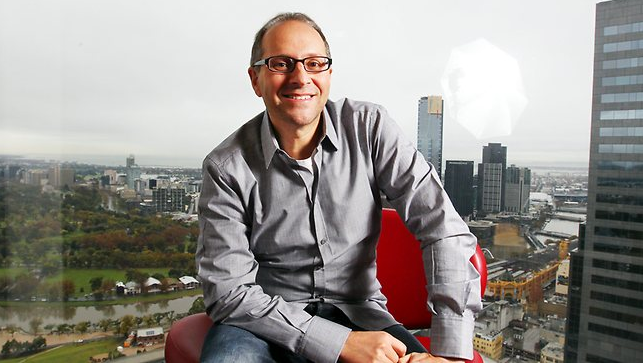Is Waislitz a new Buffett?
| Summary: The soon-to-be listed Thorney Opportunities fund could evolve into a local version of Buffett’s Berkshire Hathaway. Value investor Alex Waislitz has raised an initial $80 million for the fund, and his team will be focused on identifying value opportunities and investing in them accordingly. |
| Key take-out: Waislitz says he wants to have a series of alliances with other groups so the fund can tackle situations it identifies. |
| Key beneficiaries: General investors. Category: Shares. |
Australian share investors have long been looking for a local Warren Buffett … a master of the market they might invest alongside. But, to date, no single listed company has emerged as the Berkshire Hathaway of the ASX. Sure, there have been market masters: Kerr Neilson at Platinum Asset Management is a king of offshore markets, David Paradice shines in the small cap space; even the Packer family has at times carried a legion of investors in its wake.
But, while these operators have graced the headlines, it’s become clear Alex Waislitz of Thorney Investments might be the one to take the mantle. As a value investor who’s also an activist, he has been quietly building a tremendous fund. Thorney Holdings was started by Waislitz with $1 million seed funding from his father in law, the late packaging tycoon, Richard Pratt. In recent years the fund has swelled to more than $1 billion, with Waislitz racking up returns of at least 20% a year on average … but until now it’s all been private.
This week Waislitz moves to ‘go public’. Following an AGM at the ASX-listed Wentworth Group, he intends to create an initial $80 million ASX-listed fund to be known as the Thorney Opportunities fund – $21 million comes from Thorney, $14 million represents existing cash in the company, $35 million has already been raised from sophisticated investors, and another $10 million will be raised off retail investors in the three weeks before a deadline of December 18.
Interest has been building around Waislitz and the fund, not least because the sophisticated investor component of the raising was 30% oversubscribed and, as he explains, “We could have got $100 million but we want to stay small … we want to be hungry.”
Waislitz is a rarity. He’s a value investor, a true believer in the staples of intrinsic value, but he is also an activist investor … though he prefers the word “constructive”. In other words, he is willing to get inside companies and consult intensely if necessary to get the results he knows are possible. In this respect, he is flanked by a new generation of activist investors such as Mark Carnegie, known for his initiatives around Brickworks, and Simon Marais of the Allan Gray group, known for his initiatives around Fairfax.
Investors need only look to the board of Wentworth, where Waislitz is chairman, to see that a mix of value investing and guile might be very interesting in the months ahead. Waislitz has enlisted veteran activist investor Garry Weiss, of the legendary GPG group, to join the Wentworth board along with stockbroker Hugh Robertson of Wilsons, and lawyer Henry Lanzer of Arnold Bloch Leibler.
Not that any investing model is perfect, or that Waislitz gets it right every time. On the day we talked the market was digesting a sharp profit downgrade at Webjet, an internet travel company that Thorney has been an investor in for many years. Though the holding has shrunk in recent times, Waislitz would surely have winced as he watched his 10% stake in the group battered by a recent near 50% share price decline. “We still believe in them; we might even go back in and buy shares at these levels,” he says with a grin.
So how will Waislitz operate his new public fund and what might we expect?
James Kirby: Considering you had a substantial oversubscription in this new fund, might you raise more?
Alex Waislitz: No, we are happy to cap it here. There is plenty of capital. We could very comfortably raise another $50 million from sophisticated investors alone … perhaps another $100 million. We have not gone down that path, to create an environment with a small pool of capital to get the energy and excitement of starting off small. We want to be hungry; we want to make that equity sweat.
Crucially, we want to have a series of alliances with other groups so we can tackle situations we identify.
JK: Have you done this sort of alliance in the past?
AW: Yes, when we went to agitate for change at Redflex there were quite a few small cap managers at the time and, in discussions with them, we found they were prepared to vote accordingly. We got leverage on our equity … we got voting support going. Nowadays, institutions actually come to us, and they say, “we’re stuck in some stock … we don’t want to get out. What can we do to effect change?
JK: If you review things, how important has the element of activism been to you beyond conventional value investing?
AW: Well, if you buy well, you give yourself a lot of buffer zones. I’ll just say the activist component is always significant to our returns. In my early days I was a trader, and then I realised I was most effective when I was an involved investor. I did it originally because I could not afford to have any setbacks. And still, when I see situations where companies can do better, they can work their balance sheet better, they can be more productive, they can sell something … with the perspective that we are a fellow owner of the business ... we put our view forward.
JK: Give us an example of where that worked?
AW: Well, I’d say Skilled Engineering was a listed company run like a family company [and] the opportunity came when they had too much leverage going into the GFC. The Hargrave family had made a series of acquisitions, and when GFC hit earnings they were in danger of breaching banking covenants, and had to raise fresh capital because it certainly was not a time to sell businesses.
We were not a shareholder at the time, though we followed the company and we saw that as an opportunity to buy into the company and advocate some changes. On this we worked quite closely with Simon Marais of Allan Gray, and between us we took a majority of the placement and shortly thereafter we saw significant leadership change. The CEO Greg Hargrave was replaced by Mick McMahon, who has turned out to be a fabulous CEO for that company. The raising was at about $1.50 a share, and today they are $3.40.
JK: What about when things don’t go right? Webjet ($2.85) has fallen 50%, and you’re in there as a shareholder aren’t you? How do you respond?
AW: Well, we are there for quite a few years. We bought a lot at 50 cents a share. It’s been a performer for us, a great brand. We have been reducing over the last 12 months, maybe 15, down to about 10%.
Part of the reduction in the bottom line at Webjet is marketing spend. They are in a cyclical downturn; they bought the online travel agent Zuji. I think the market is underestimating Webjet, to be honest.
JK: As an activist, do you have to re-activate sometimes? Do you have to go back in?
AW: Of course, you often have to go back in. An example where we are losing money is a financial services group where Tony Robinson from OAMPS came in. Tony did a variety of things at Centrepoint Alliance; he did not achieve what we wanted – there is a new CEO now.
JK: When you take a position in a stock, do you plan to stay in for a long time?
AW: Well, if the company keeps achieving its goals, if the group keeps getting better at what they do, we stay in. An example of that would be Monadelphous. We’ve been there for over a decade – and the share price has not gone in a straight line, but over time it has consistently grown . Monadelphous has been able to reposition itself constantly. They are very nicely situated now in oil and gas and water, whereas previously they were very into iron ore. The maintenance work – virtually annuity income – is more than 40% now at that company.
JK: Tell me about value. Do you have your own intrinsic value formula?
AW: Well, we are driven by our own metrics. We have our model, we do our own work, and we’d be aware of consensus valuations – on the basis they exist. And then we put our emphasis on the people at the company.
JK: How do you know if a management team goes off the rails?
AW: That’s where the art comes in. We engage with management as often as we can, we meet as many people across the company as you are allowed to. We like getting out to see the company. I say to our staff, “I don’t really want to see you during the day – you should be out on the road”.
JK: In principle, is there anything you won’t touch?
AW: We’ve often got 100 holdings. There is nothing we actively exclude; we are looking for good business. Business dynamics are similar across all businesses. We are not an expert on any industry – sometimes we may get an expert in to assist us. We’re driven by opportunity; we like turnaround stories.
JK: Let’s talk a little about the specific environment you are launching this fund in. What’s your views on the big macro issues: rates , the dollar, and so on?
AW: Well, I think we may actually see a further reduction in interest rates. The recovery is still slow and patchy. As for the dollar, I am not talking short term, but I think ultimately we are looking at something closer to 80 cents (the dollar is currently 93 cents) and that would be good in many ways.
I’d like to think the US is really recovering. I have been there recently and it is quite convincing; and I don’t think China is going to cool anything like some people had been fearing.
James, the one thing I think which is going to come in the next phase of the cycle … clearly you are seeing a lot of floats at the moment, but you’d have to be thinking next year we are going to see a lot of merger and acquisition activity.
JK: Do you see the battle for Warrnambool Butter as a signal of that?
AW: Well, that shows the value in some parts of our economy. More broadly, you have a lot of well capitalised companies with strong balances sheets and takeovers are one way they can get the performance they are looking for in a slowly growing economy.
The next phase after that is the FOMO phase: “the fear of missing out” period where you can get a real acceleration of activity. One more thing, I’d like to see more action on the home building front. I really think the Abbott Government could do more to stimulate that sector.
















